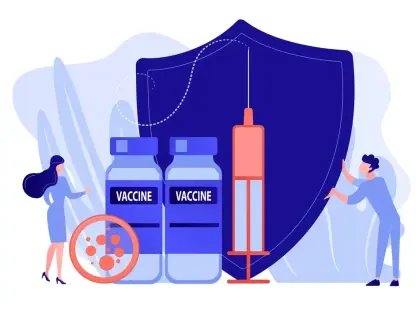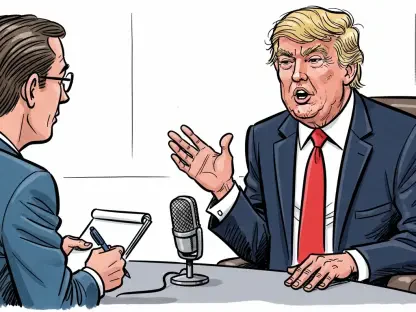Welcome to an insightful conversation on the critical state of public transit funding in Pennsylvania. Today, I’m joined by Donald Gainsborough, a political savant and leader in policy and legislation, who heads Government Curated. With his deep expertise in navigating the complexities of government initiatives and legislative processes, Donald is the perfect person to shed light on Governor Josh Shapiro’s urgent push for transit funding, the financial struggles of SEPTA, the real-world impacts on everyday Pennsylvanians, and the legislative hurdles standing in the way of a solution. Let’s dive into this pressing issue that affects so many lives across the state.
How has Governor Shapiro framed the urgency of public transit funding, and what’s driving his call for immediate action?
I’m glad to be here to unpack this, Ethan. Governor Shapiro has been incredibly clear that the situation with public transit, particularly SEPTA, is at a breaking point. He’s emphasized that the time for temporary patches is over. The core issue is sustainability—transit systems need reliable, long-term revenue to function. Shapiro has pointed out that without this, the backbone of communities—access to jobs, schools, and essential services—starts to crumble. He’s pushing for action now because delays mean deeper cuts and higher fares, which hit working families hardest.
What does Shapiro mean when he talks about moving beyond short-term fixes, and what kind of lasting solution is he advocating for?
Shapiro’s frustration with short-term fixes comes from past efforts like diverting highway funds to keep SEPTA afloat for a few months. That’s just kicking the can down the road. He’s advocating for recurring revenue streams—think dedicated portions of state taxes or other stable funding mechanisms—that ensure transit agencies don’t face these annual budget crises. His vision is to build a system where agencies can plan for the future, not just survive the present.
Can you break down the financial challenges SEPTA is facing right now, particularly that staggering $213 million deficit?
Absolutely. SEPTA’s $213 million deficit is a structural problem, meaning their expenses consistently outpace their revenue. A big part of this is declining ridership post-pandemic, which slashed fare income, combined with rising operational costs like labor, fuel, and maintenance. Federal COVID relief funds helped for a while, but those have dried up. Without new state funding, SEPTA can’t balance the books, and that’s why they’re staring down drastic service cuts and fare hikes.
What are the specific consequences for SEPTA riders if funding isn’t secured soon, especially with those looming service reductions?
If funding doesn’t come through by mid-August, SEPTA is set to implement a 20% service cut right as schools reopen, followed by a 45% reduction over the year. That means fewer buses, trains, and trolleys, longer wait times, and routes disappearing altogether. For students, workers, and anyone without a car, this could mean missing classes, being late to jobs, or not getting to medical appointments. It’s not just inconvenience—it’s a disruption to livelihoods. Plus, a 21.5% fare increase in September will make even the reduced service less affordable.
How do these potential cuts and fare increases impact the daily lives of Pennsylvanians, especially those who rely on SEPTA as their primary mode of transportation?
Take someone like a hospitality worker or a student in Philadelphia—SEPTA is their lifeline. When service is cut, they’re forced to find alternatives, which might mean spending more on rideshares or gas if they can even afford a car. Congestion on roads will worsen as more people drive, and budgets get tighter with higher fares. It’s a ripple effect: missed work hours, less money for groceries, and more stress. For many, SEPTA isn’t just transport—it’s their connection to opportunity.
We’ve heard powerful stories from community members about their dependence on SEPTA. Can you share how these personal accounts highlight the broader stakes of this funding crisis?
Definitely. Stories from folks like hospitality workers in Northeast Philadelphia paint a vivid picture. They’ve shared how SEPTA’s reliability has been crucial for getting to work on time, supporting their families, and staying connected to their communities. When they speak out, it’s not just about a bus or train—it’s about their ability to keep a job or care for loved ones. These personal stakes show why funding isn’t just a budget line item; it’s about preserving the fabric of daily life for thousands.
Turning to the legislative side, can you walk us through the bill passed by the House to boost transit funding and what it aims to achieve?
The House passed a bill in June that would increase the share of state sales tax revenue going to the Public Transportation Trust Fund from 4.4% to 6.15%. That shift would bring in an additional $292.5 million for transit agencies like SEPTA. The goal is to provide a significant cash infusion to prevent cuts and stabilize operations. It also aligns with Shapiro’s budget proposal and includes accountability measures, like tackling fare evasion, to address concerns about how funds are managed.
What’s preventing this bill from moving forward in the Senate, and how do political dynamics play into these delays?
The Senate, which is Republican-controlled, hasn’t brought the bill to a vote yet, and there’s resistance from key leaders. Some GOP senators argue SEPTA needs better fiscal management before getting more money, pointing to issues like fare evasion and public safety. Others have floated ideas like reallocating existing funds or passing a temporary budget, which critics say doesn’t solve the core problem. With the Senate in session for very few days since Shapiro’s budget proposal, partisan gridlock and differing priorities are stalling progress.
How are lawmakers responding to criticisms and concerns about SEPTA’s management as part of this funding debate?
House Democrats have tried to address these criticisms head-on by updating the legislation. The bill now includes performance criteria, like improving fare collection metrics, to ensure accountability. They’ve also incorporated suggestions from Republican lawmakers about revenue opportunities, like marketing spaces on SEPTA property. The idea is to show they’re listening and willing to compromise, but it remains to be seen if this will sway enough Senate votes to get the bill across the finish line.
What is your forecast for the future of public transit funding in Pennsylvania, given the current challenges and political landscape?
Looking ahead, I think the outcome hinges on whether both sides can find common ground in the next few weeks. If the Senate continues to resist, we’re likely to see those devastating SEPTA cuts roll out, which could spark public outcry and pressure lawmakers to act. On the other hand, if Shapiro and House Democrats can build a coalition with a few key Republicans, there’s a chance for a breakthrough. Long-term, Pennsylvania needs a bipartisan commitment to sustainable transit funding—otherwise, we’ll be back in crisis mode year after year. The clock is ticking, and the stakes couldn’t be higher.









